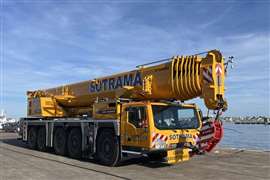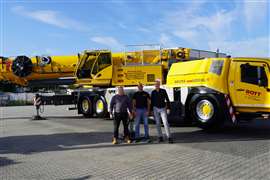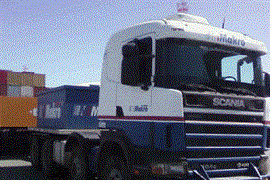Read this article in Français Deutsch Italiano Português Español
How tech meets mentorship in construction’s new era
22 May 2024
The merger of tech and reverse mentoring could be a workforce sweet spot. In the age of rapid tech advancement and emerging AI, a two-way knowledge flow can not only help older workers leverage tech, it can also build team trust among generations, while also serving as a valuable component in the next-gen worker search.
 Artificial Intelligence (AI)
Artificial Intelligence (AI)
Reverse mentoring, as it has been designated, is a practice where younger or less experienced employees mentor older or more experienced colleagues – and it has all the potential to bring myriad benefits to the modern construction industry.
Younger workers often have a better understanding of emerging technologies and digital tools. By participating in reverse-mentoring relationships, older construction professionals can learn about new construction management software, building information modelling (BIM) technologies, drones and other innovations that can improve project efficiency, accuracy and safety.
Reverse mentoring also facilitates the transfer of knowledge and expertise between generations. Experienced professionals can share their insight, wisdom and practical know-how with younger workers, while younger workers can contribute fresh perspectives, up-to-date technical skills and knowledge of modern construction practices.
On the safety side, younger workers may have received more recent safety training and education, making them well-equipped to mentor older colleagues on up-to-date best practices. Ultimately these relationships can generate conversations about safety protocols, hazard recognition and injury prevention, leading to a safer work environment for everyone onsite.
As for the workforce benefits, in a rapidly changing industry landscape, construction companies need to be adaptable and agile to remain competitive. Reverse mentoring encourages a culture of continuous learning and adaptation by leveraging the insight and perspectives of younger workers who are more attuned to changing market trends, customer preferences and technological advancements.
At the same time, such programmes can, and often do, enhance employee engagement and retention by providing opportunities for professional development, skill enhancement and mentorship. Younger workers often feel valued and respected for their contributions, while older workers may appreciate the opportunity to learn from their younger counterparts and stay relevant in their careers.
New era
Swinging back to tech, looking ahead, the possible applications of AI for the construction industry appear to be as transformative as they will be in just about every other industry – spanning everything from design to procurement, construction, operation and decommissioning. Designers and contractors are already applying AI and machine learning to manage the volumes of data involved in the design of buildings, the planning of construction projects and the day-to-day operations of sites.
In addition, experts believe AI could have a positive impact, for example, by assisting in monitoring safety via sensors, cameras, predictive trend data and modelling to determine ways to make construction work zones safer and more efficient. Just as the introduction of CAD has been transformative of the practice of building design, the use of AI tools could transform the built environment from start to finish.
It makes sense to understand that a younger workforce will be driving this new era forward. Within the transformation existing workers of all ages will need help getting caught up on the changes. This window of opportunity could prove very effective in attracting new workers to the trades – where they’ve traditionally assumed the work, and their roles, fall short of their expectations of what a modern job should look like.
STAY CONNECTED


Receive the information you need when you need it through our world-leading magazines, newsletters and daily briefings.
CONNECT WITH THE TEAM












